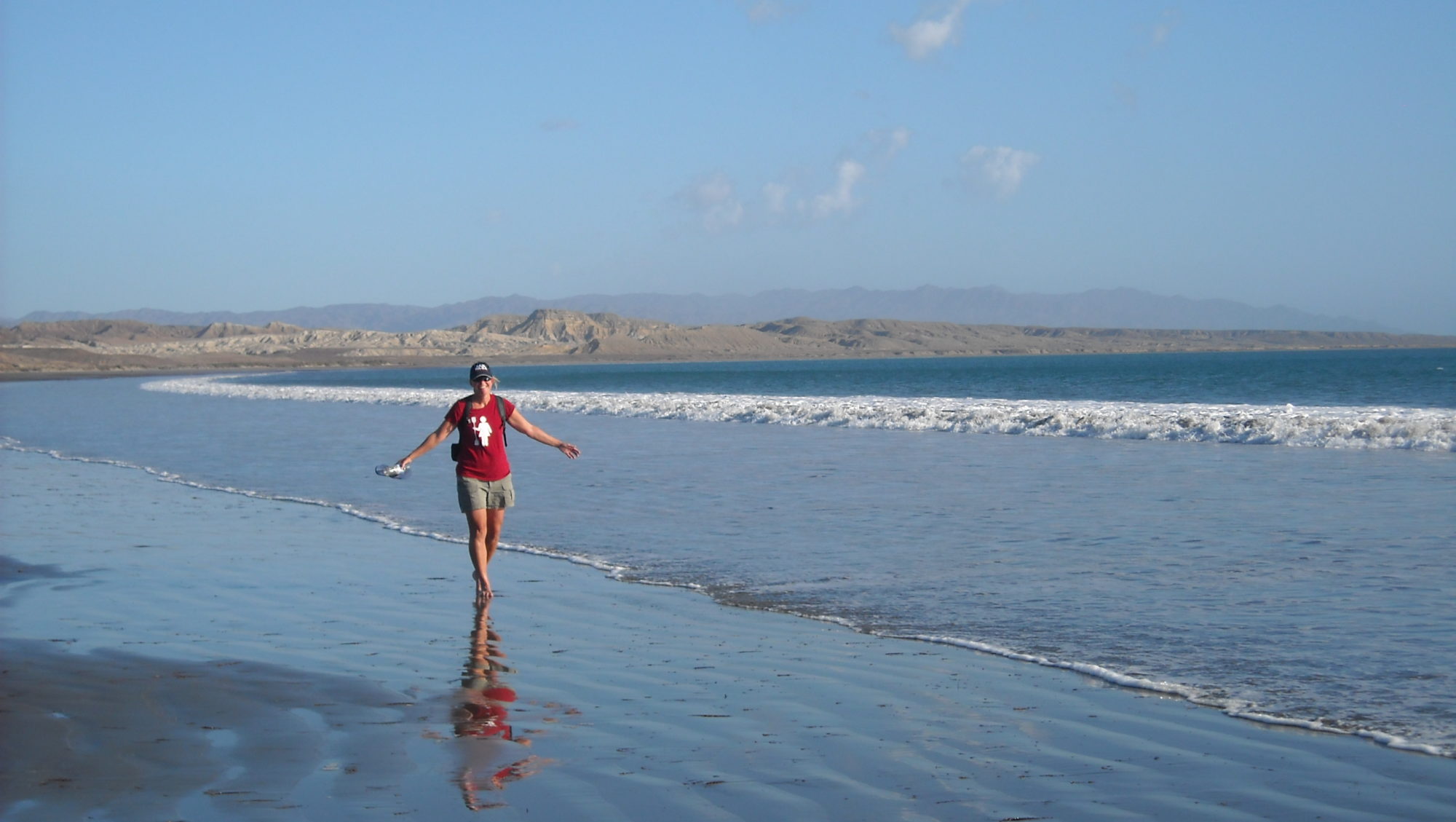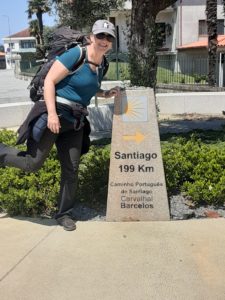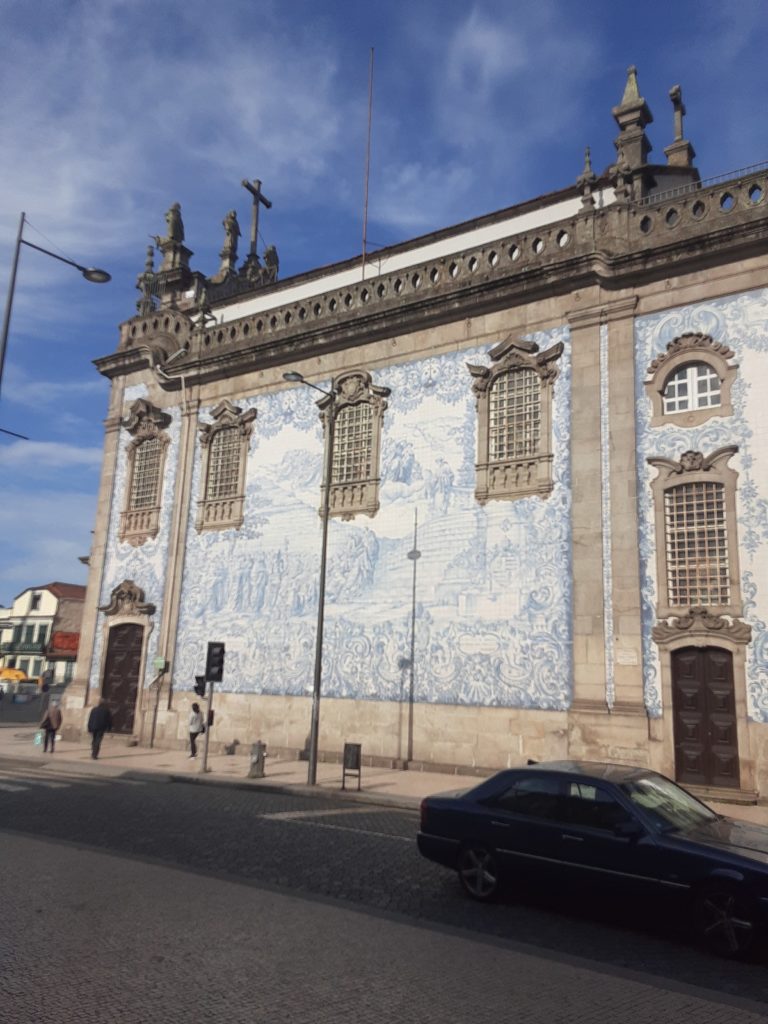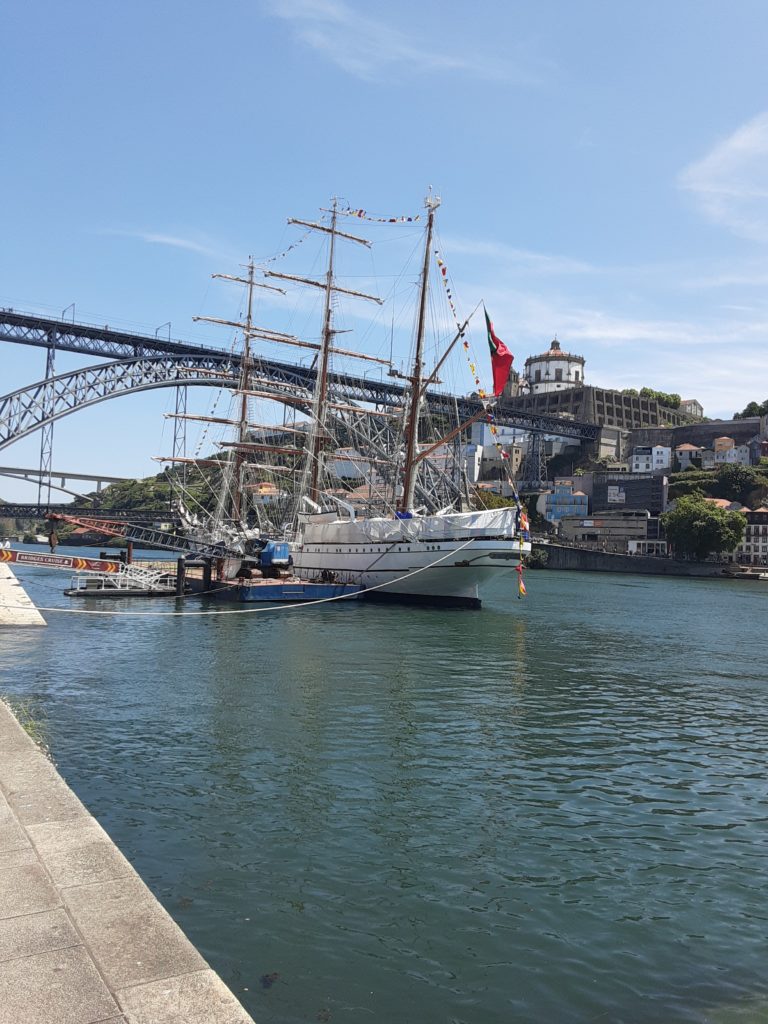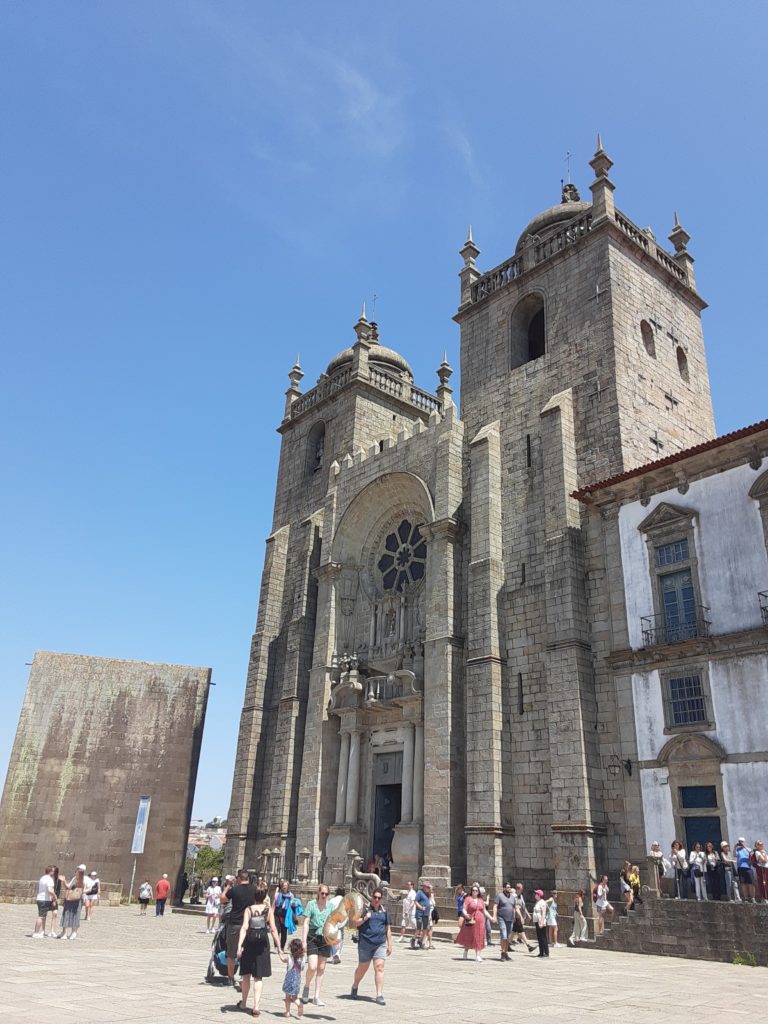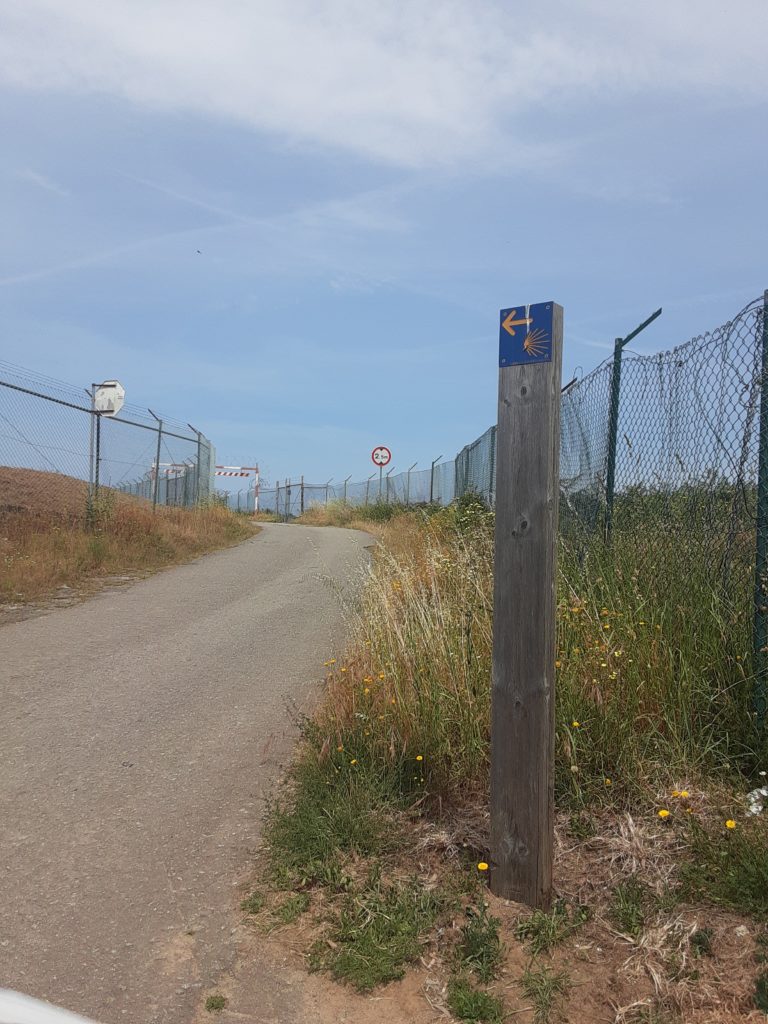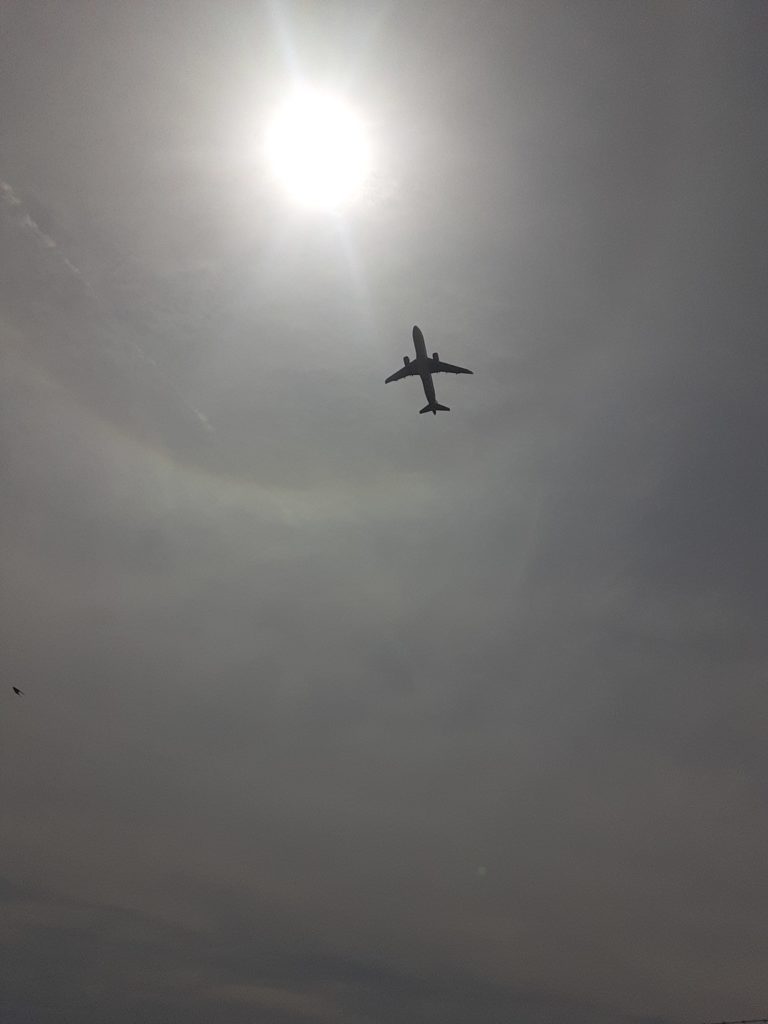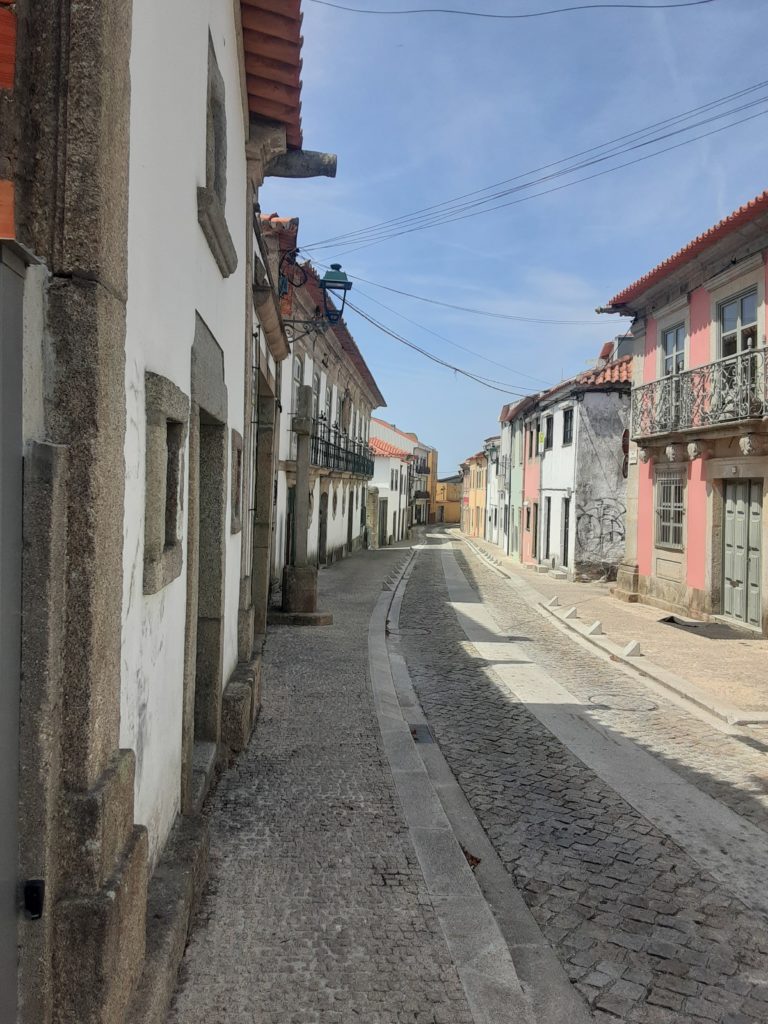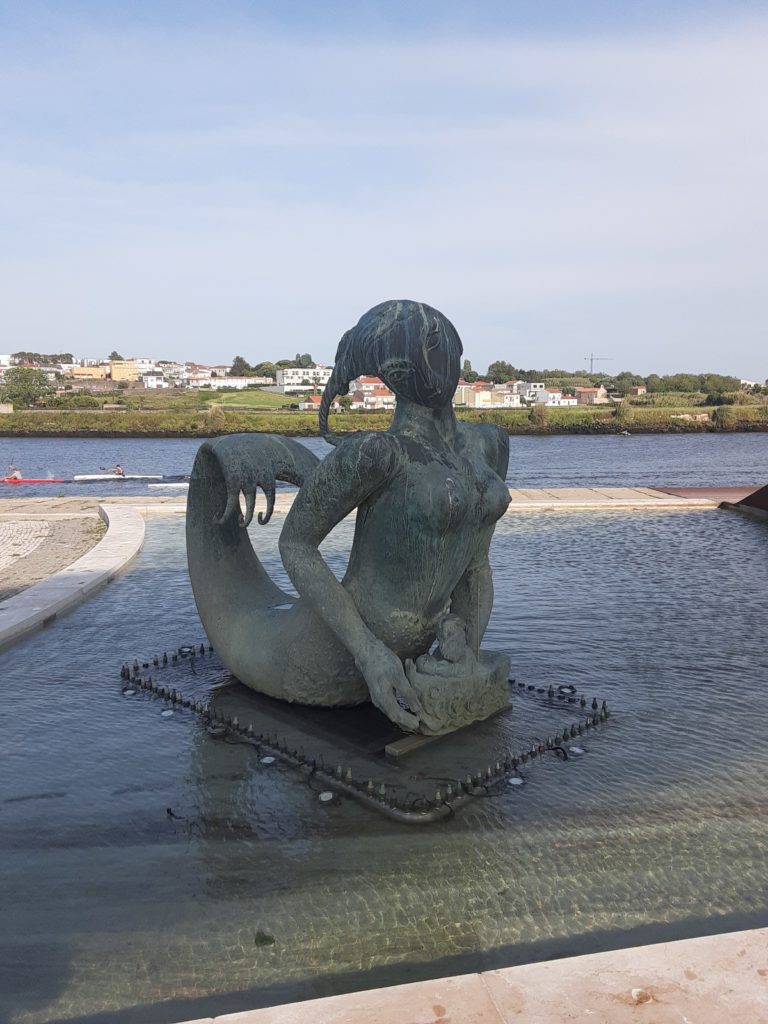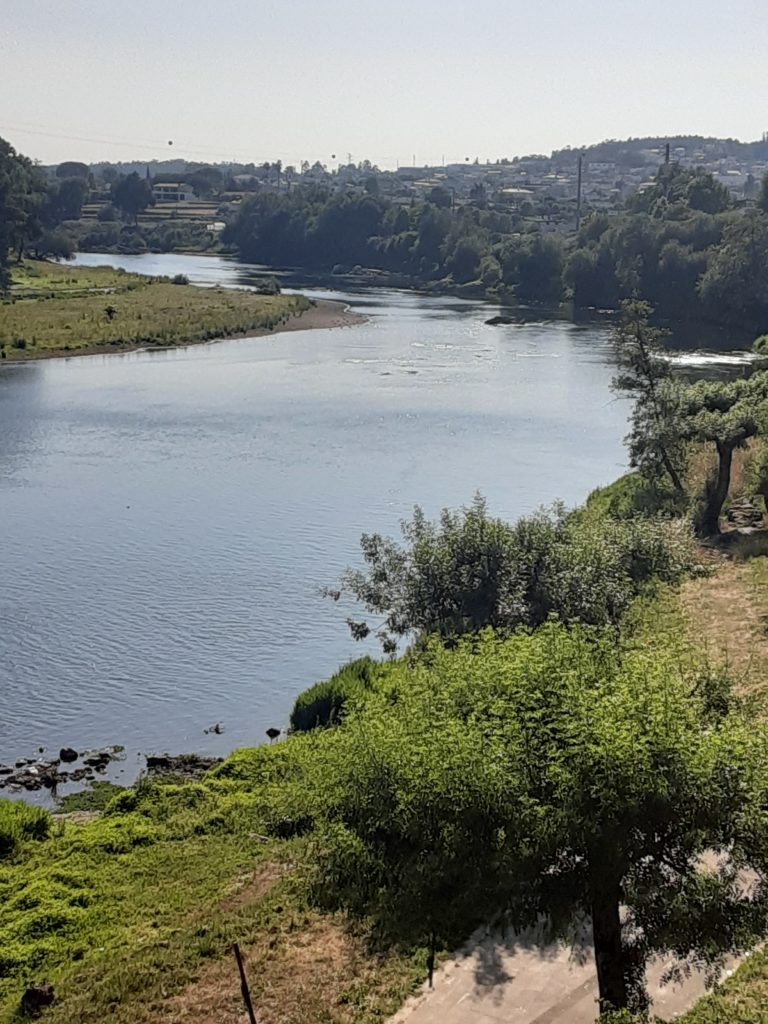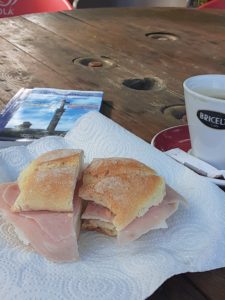When I was walking the Camino Portugues this past May from Porto to Santiago de Compostella, I had no foot problems even though I was ready for any foot emergency. I carried bandaids and tape, but I didn’t use the stuff. My feet stayed blissfully happy for eleven days of walking.
When I walked the Camino Frances back in 2012, I also had no blisters although I lost two toenails (ouch!) on the first and second days. On the Via Francigena in 2014, I had lots of foot pains and a blister because I didn’t properly break in the shoes before the walk.
Before the Camino Portugues, I trained a lot on concrete pavement in the hiking shoes. The pavement training turned out to be important because there was a lot of pavement and stone under the feet on the Portugues. I would even go so far as to say there was more pavement than the other walks, but that is just my completely biased opinion based on memories of walks over a decade ago. I did do a happy dance whenever my feet got to dirt on the Portugues.
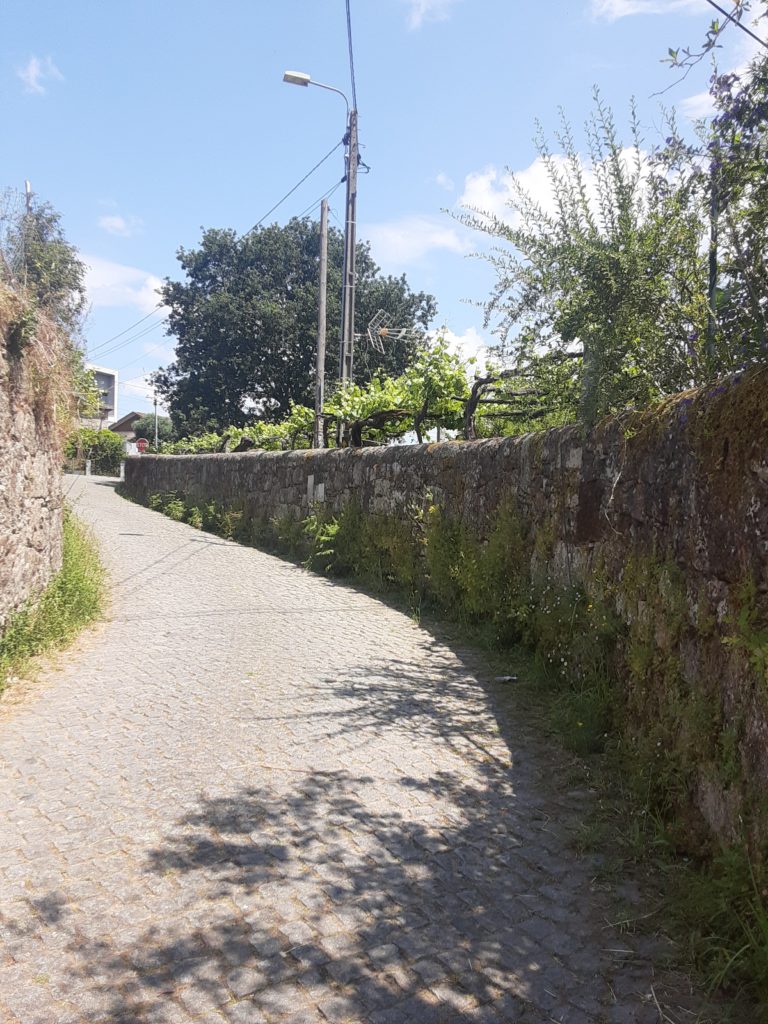
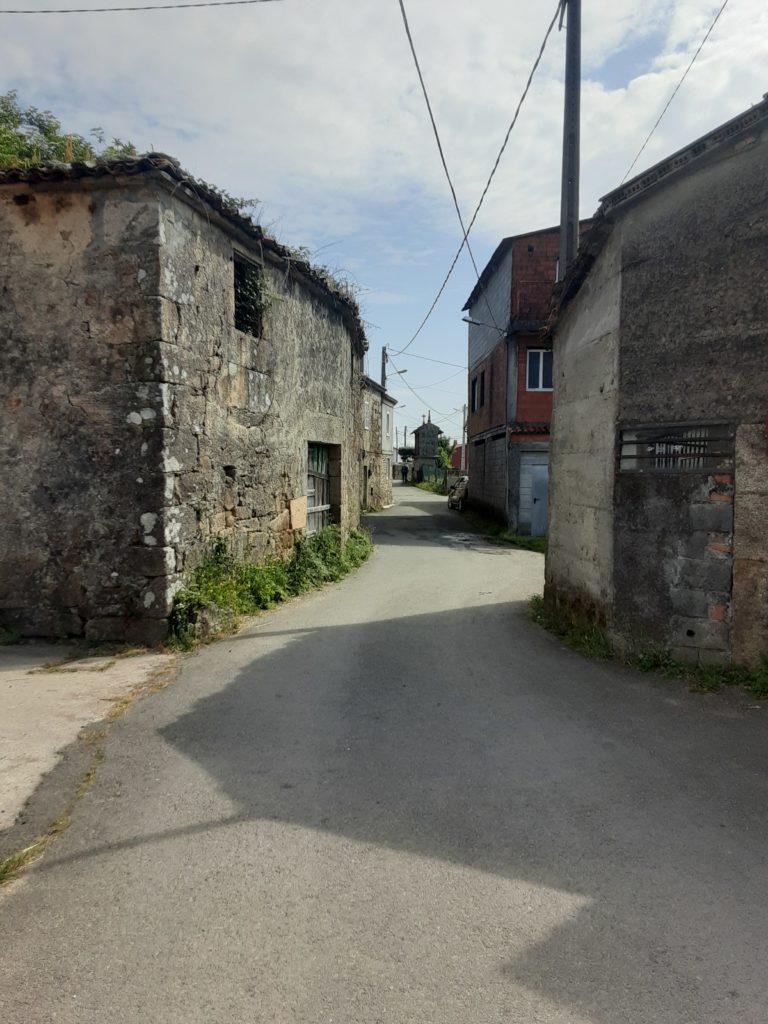
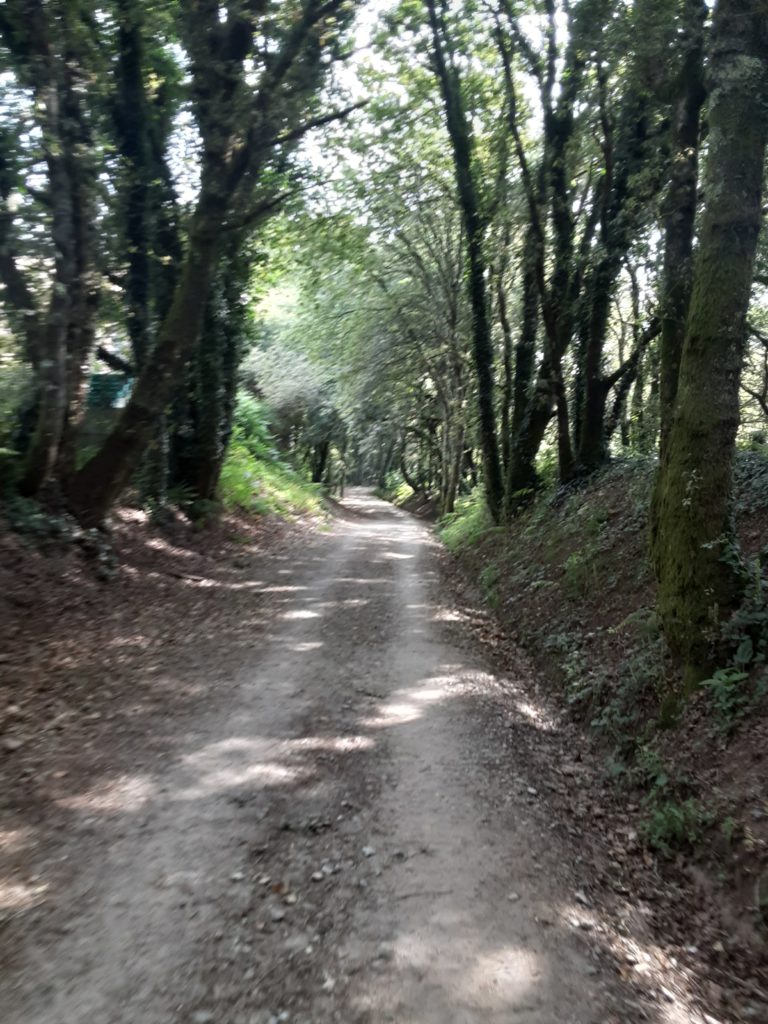
So how did my feet stay blister free on the Camino Portugues?
This is what I did every morning:
I would sit and rub my feet. Good morning, feet, I hope you had a good sleep.
I would then rub Body Glide chafing stick all over my feet especially hitting the toes, the soles, the sides. The purpose of the chafing stick is to prevent friction from building up in the sock. You can also use Vaseline.
I would put on one clean dry pair of Smart Wool socks. I had brought five pairs of socks, but in future Caminos, I will only bring three. I always had a pair that was dry and clean. These socks were so comfortable that I would rub my feet again with the socks on.
Finally, I put on my hiking shoes. I had a pair of Columbia waterproof hiking shoes that I bought on sale at an outlet store. These shoes ended up being the most comfortable shoes I’ve ever worn on a Camino. I wear shoes that are Size 7 ½ to 8 (US sizes). These were Size 8. They never felt too tight or too oversized.
With shoes on, I would stand up, take a few steps, and do a little dance with my hands in the air like I just don’t care. When everything felt good, I would put on the pack and go. Let’s see what the day brings.
During the walk, I would stop frequently to take breaks. If possible, I would try to sit with my feet up. I would keep my shoes and socks on during my breaks. I know some folks like to take their shoes off. I think this is entirely your preference.
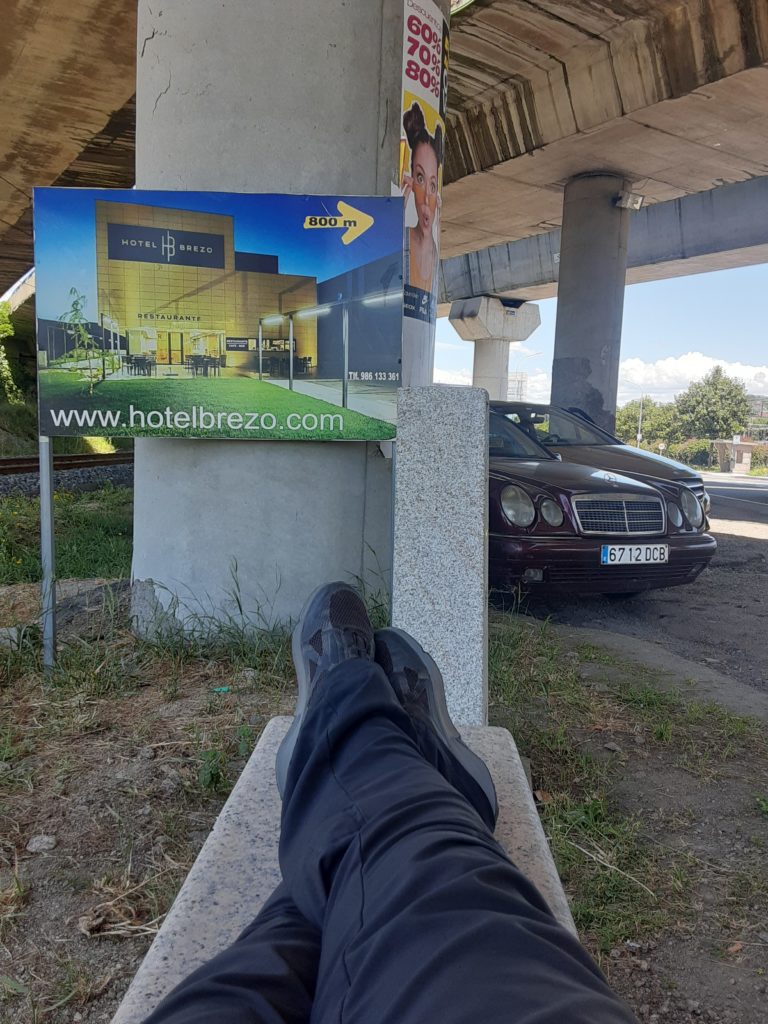
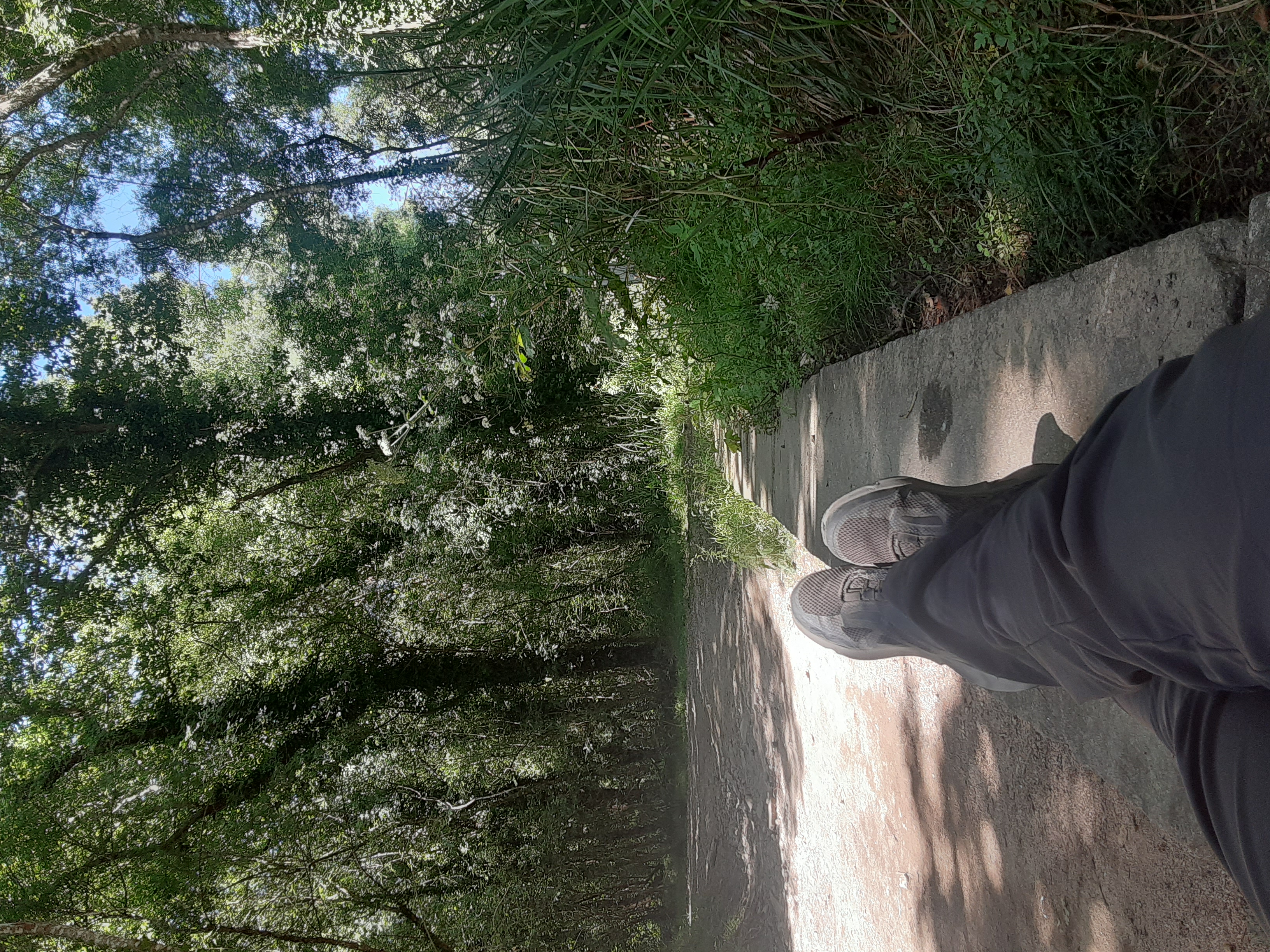
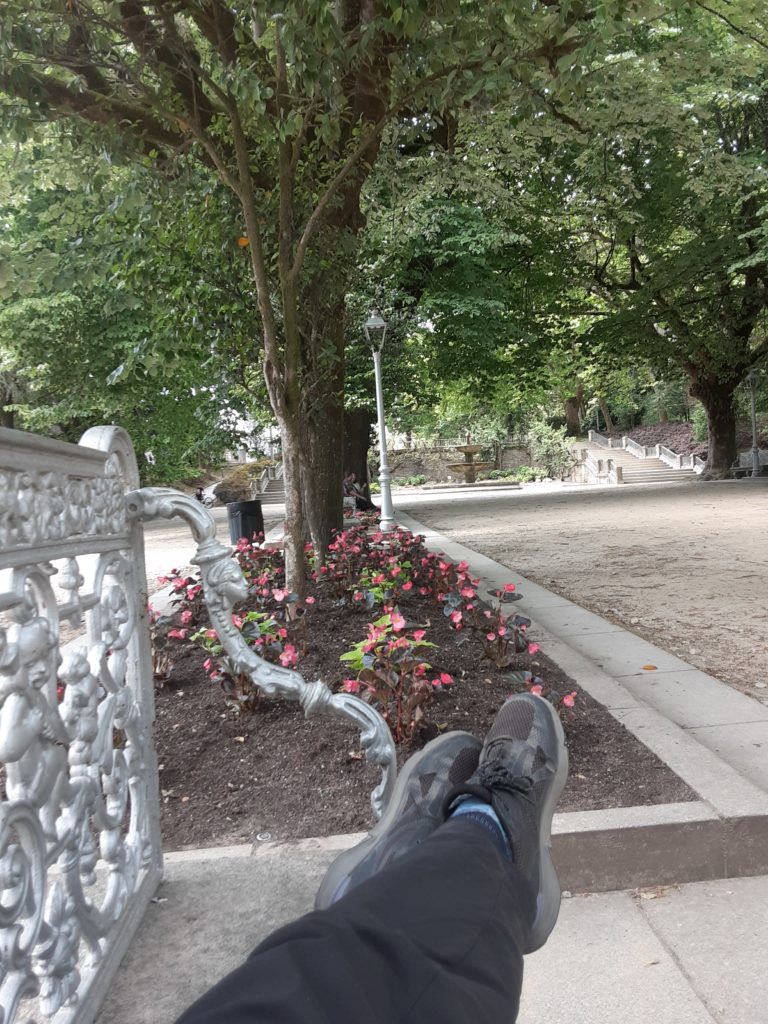
At the end of the walking day, when it was time to take the shoes off, I would sit, take off the shoes, take off the socks, check my feet, rub my feet. They were good feet for me.
I had an extra pair of light sneakers as well as a pair of flip-flops, but because my walking shoes were so comfortable, I usually put the Columbias back on for a walk around the town.
